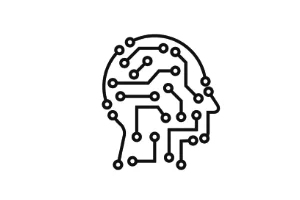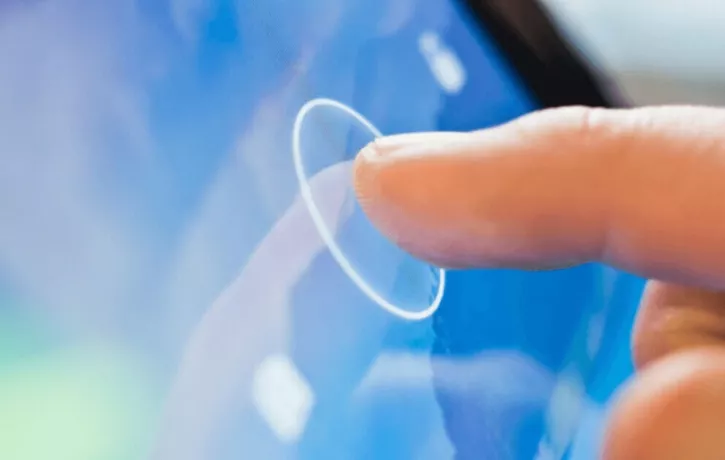Your customers are losing patience.
In the era of Amazon Prime, instant Netflix streaming, and virtual assistants, your customers have gotten used to a new standard for speed and convenience. They have little tolerance for inefficiency. They want an effortless customer experience.
Anything less feels prehistoric. Anything less will damage the way they perceive your brand.
By the time your customers start to think unfavorably of you, they already have one foot out the door.
If you want to not only retain your customers, but keep them happy and engaged, you must be able to read their minds. You need a zero-touch customer experience model — a framework for monitoring the customer journey and preempting issues with proactive support.
 Companies that have robust digital customer experience strategies are the most competitive.
They use powerful technology to bring their customers greater value, unleash new efficiencies in customer service, and disrupt the status quo.
But simply integrating more digital tools into your customer experience model is not the answer. Without the right strategy, you risk creating more friction, spurring more frustration, and lowering retention.
The number of satisfied customers drops by 30% if it takes more than one day to complete an interaction, according to a consumer survey report from Ericsson.
Moreover, more than 40% of consumers say inefficiency is frustrating enough to drive them away from a business, PwC found.
Companies that have robust digital customer experience strategies are the most competitive.
They use powerful technology to bring their customers greater value, unleash new efficiencies in customer service, and disrupt the status quo.
But simply integrating more digital tools into your customer experience model is not the answer. Without the right strategy, you risk creating more friction, spurring more frustration, and lowering retention.
The number of satisfied customers drops by 30% if it takes more than one day to complete an interaction, according to a consumer survey report from Ericsson.
Moreover, more than 40% of consumers say inefficiency is frustrating enough to drive them away from a business, PwC found.
 The first step to creating an effortless CX is making your customer experience model reflect what actually matters to your customers.
What do your customers want?
Eighty percent of American shoppers say speed, convenience, and knowledgeable support are the most important elements of CX, according to PwC.
Nearly half — 43% — said they would pay more for greater convenience, while 42% would pay more for a friendlier, more welcoming experience.
With a zero-touch customer experience model, you can deliver all of these essential elements of positive CX.
The first step to creating an effortless CX is making your customer experience model reflect what actually matters to your customers.
What do your customers want?
Eighty percent of American shoppers say speed, convenience, and knowledgeable support are the most important elements of CX, according to PwC.
Nearly half — 43% — said they would pay more for greater convenience, while 42% would pay more for a friendlier, more welcoming experience.
With a zero-touch customer experience model, you can deliver all of these essential elements of positive CX.
 Your customers desire personalization. It makes them feel valued. When they feel appreciated, they are more likely to endorse your brand, make more purchases, and take other actions, like subscribing to a newsletter.
Personalization is also fundamental to a zero-touch customer experience model.
It allows your customers to enjoy on-point recommendations and real-time support without exerting much effort.
You probably already have huge stores of customer data. By analyzing user history and past purchases, demographic information, location, profession, and contextual data, you can gain the insights necessary to provide a tailored experience.
Based on these insights, AI tools can provide real-time, personalized recommendations. For example, AI can deploy highly specific, relevant prompts while users are on your site. It can segment your newsletter subscribers based on predefined criteria so you can target different customers with specific information, campaigns, and promotions.
Your customers desire personalization. It makes them feel valued. When they feel appreciated, they are more likely to endorse your brand, make more purchases, and take other actions, like subscribing to a newsletter.
Personalization is also fundamental to a zero-touch customer experience model.
It allows your customers to enjoy on-point recommendations and real-time support without exerting much effort.
You probably already have huge stores of customer data. By analyzing user history and past purchases, demographic information, location, profession, and contextual data, you can gain the insights necessary to provide a tailored experience.
Based on these insights, AI tools can provide real-time, personalized recommendations. For example, AI can deploy highly specific, relevant prompts while users are on your site. It can segment your newsletter subscribers based on predefined criteria so you can target different customers with specific information, campaigns, and promotions.
 Automation is a key element of a zero-touch customer experience model. The most effective way to provide an effortless CX is to automate many of the processes your customers normally need to complete manually.
For example, instead of making visitors to your site spend time searching for something, a chatbot could ask them what they’re trying to find, then direct them to the right page.
It can also auto-fill check-out forms to expedite the purchasing process.
Automation enables “intention detection,” in which historical and contextual user data is analyzed to anticipate their goals, identify friction, and automatically resolve issues without any customer interaction.
Automation is a key element of a zero-touch customer experience model. The most effective way to provide an effortless CX is to automate many of the processes your customers normally need to complete manually.
For example, instead of making visitors to your site spend time searching for something, a chatbot could ask them what they’re trying to find, then direct them to the right page.
It can also auto-fill check-out forms to expedite the purchasing process.
Automation enables “intention detection,” in which historical and contextual user data is analyzed to anticipate their goals, identify friction, and automatically resolve issues without any customer interaction.
 Automation and AI can be a boon to your customer experience, but only if they are implemented in the right way.
If they aren’t, they will make your customer experience burdensome and inefficient instead of the other way around.
For example, automation can improve the effectiveness of your call center staff by handling simple queries and letting human workers take care of complex issues. But if a customer needs to repeat themselves ten times because the robot on the line isn’t processing what they’re saying, this is not zero-touch. This is a frustrating, time-consuming experience.
You can avoid this by monitoring the effectiveness of your digital tools, and course-correcting when necessary.
Automation and AI can be a boon to your customer experience, but only if they are implemented in the right way.
If they aren’t, they will make your customer experience burdensome and inefficient instead of the other way around.
For example, automation can improve the effectiveness of your call center staff by handling simple queries and letting human workers take care of complex issues. But if a customer needs to repeat themselves ten times because the robot on the line isn’t processing what they’re saying, this is not zero-touch. This is a frustrating, time-consuming experience.
You can avoid this by monitoring the effectiveness of your digital tools, and course-correcting when necessary.
 When creating your zero-touch customer experience model, identify areas in the customer journey where the human element must remain.
Despite advanced technological capabilities, 71% of American consumers would rather interact with a human than a machine, according to PwC. Another 64% feel companies have lost touch with the human component of CX.
A successful zero-touch strategy includes AI’s ability to analyze information, make decisions based on data, and learn. It uses automation to streamline processes and complete tedious processes for customers. Importantly, it also includes empathy, emotional intelligence, and personal connections — attributes that can only be delivered from your human employees.
When creating your zero-touch customer experience model, identify areas in the customer journey where the human element must remain.
Despite advanced technological capabilities, 71% of American consumers would rather interact with a human than a machine, according to PwC. Another 64% feel companies have lost touch with the human component of CX.
A successful zero-touch strategy includes AI’s ability to analyze information, make decisions based on data, and learn. It uses automation to streamline processes and complete tedious processes for customers. Importantly, it also includes empathy, emotional intelligence, and personal connections — attributes that can only be delivered from your human employees.
Boost customer loyalty and increase engagement with the ultimate customer experience.
Going digital is not going far enough
 Companies that have robust digital customer experience strategies are the most competitive.
They use powerful technology to bring their customers greater value, unleash new efficiencies in customer service, and disrupt the status quo.
But simply integrating more digital tools into your customer experience model is not the answer. Without the right strategy, you risk creating more friction, spurring more frustration, and lowering retention.
The number of satisfied customers drops by 30% if it takes more than one day to complete an interaction, according to a consumer survey report from Ericsson.
Moreover, more than 40% of consumers say inefficiency is frustrating enough to drive them away from a business, PwC found.
Companies that have robust digital customer experience strategies are the most competitive.
They use powerful technology to bring their customers greater value, unleash new efficiencies in customer service, and disrupt the status quo.
But simply integrating more digital tools into your customer experience model is not the answer. Without the right strategy, you risk creating more friction, spurring more frustration, and lowering retention.
The number of satisfied customers drops by 30% if it takes more than one day to complete an interaction, according to a consumer survey report from Ericsson.
Moreover, more than 40% of consumers say inefficiency is frustrating enough to drive them away from a business, PwC found.
Are you hurting your CX?
An approach that makes your customers work harder to get in touch with you, navigate your site, or resolve issues is the opposite of a zero-touch customer experience model. These customer experience no-nos are the trademark of a high-touch customer strategy:- Time-consuming contact-us and question forms
- Impersonal do-not-reply emails
- Bad automated phone support
Deliver an effortless customer experience
 The first step to creating an effortless CX is making your customer experience model reflect what actually matters to your customers.
What do your customers want?
Eighty percent of American shoppers say speed, convenience, and knowledgeable support are the most important elements of CX, according to PwC.
Nearly half — 43% — said they would pay more for greater convenience, while 42% would pay more for a friendlier, more welcoming experience.
With a zero-touch customer experience model, you can deliver all of these essential elements of positive CX.
The first step to creating an effortless CX is making your customer experience model reflect what actually matters to your customers.
What do your customers want?
Eighty percent of American shoppers say speed, convenience, and knowledgeable support are the most important elements of CX, according to PwC.
Nearly half — 43% — said they would pay more for greater convenience, while 42% would pay more for a friendlier, more welcoming experience.
With a zero-touch customer experience model, you can deliver all of these essential elements of positive CX.
How to create your zero-touch strategy: 4 tips
A zero-touch approach to CX produces higher customer satisfaction, engagement, and loyalty because it shows your customers that you value you their time. The strategy relies on advanced digital tools that deliver proactive support to help customers complete tasks and solve issues as quickly as possible. Here are four tips for creating a solid zero-touch strategy.1. Embrace big data analytics and AI for greater personalization
 Your customers desire personalization. It makes them feel valued. When they feel appreciated, they are more likely to endorse your brand, make more purchases, and take other actions, like subscribing to a newsletter.
Personalization is also fundamental to a zero-touch customer experience model.
It allows your customers to enjoy on-point recommendations and real-time support without exerting much effort.
You probably already have huge stores of customer data. By analyzing user history and past purchases, demographic information, location, profession, and contextual data, you can gain the insights necessary to provide a tailored experience.
Based on these insights, AI tools can provide real-time, personalized recommendations. For example, AI can deploy highly specific, relevant prompts while users are on your site. It can segment your newsletter subscribers based on predefined criteria so you can target different customers with specific information, campaigns, and promotions.
Your customers desire personalization. It makes them feel valued. When they feel appreciated, they are more likely to endorse your brand, make more purchases, and take other actions, like subscribing to a newsletter.
Personalization is also fundamental to a zero-touch customer experience model.
It allows your customers to enjoy on-point recommendations and real-time support without exerting much effort.
You probably already have huge stores of customer data. By analyzing user history and past purchases, demographic information, location, profession, and contextual data, you can gain the insights necessary to provide a tailored experience.
Based on these insights, AI tools can provide real-time, personalized recommendations. For example, AI can deploy highly specific, relevant prompts while users are on your site. It can segment your newsletter subscribers based on predefined criteria so you can target different customers with specific information, campaigns, and promotions.
2. Take advantage of automation to improve the user journey
 Automation is a key element of a zero-touch customer experience model. The most effective way to provide an effortless CX is to automate many of the processes your customers normally need to complete manually.
For example, instead of making visitors to your site spend time searching for something, a chatbot could ask them what they’re trying to find, then direct them to the right page.
It can also auto-fill check-out forms to expedite the purchasing process.
Automation enables “intention detection,” in which historical and contextual user data is analyzed to anticipate their goals, identify friction, and automatically resolve issues without any customer interaction.
Automation is a key element of a zero-touch customer experience model. The most effective way to provide an effortless CX is to automate many of the processes your customers normally need to complete manually.
For example, instead of making visitors to your site spend time searching for something, a chatbot could ask them what they’re trying to find, then direct them to the right page.
It can also auto-fill check-out forms to expedite the purchasing process.
Automation enables “intention detection,” in which historical and contextual user data is analyzed to anticipate their goals, identify friction, and automatically resolve issues without any customer interaction.
3. Monitor digital tools and correct inefficiencies
 Automation and AI can be a boon to your customer experience, but only if they are implemented in the right way.
If they aren’t, they will make your customer experience burdensome and inefficient instead of the other way around.
For example, automation can improve the effectiveness of your call center staff by handling simple queries and letting human workers take care of complex issues. But if a customer needs to repeat themselves ten times because the robot on the line isn’t processing what they’re saying, this is not zero-touch. This is a frustrating, time-consuming experience.
You can avoid this by monitoring the effectiveness of your digital tools, and course-correcting when necessary.
Automation and AI can be a boon to your customer experience, but only if they are implemented in the right way.
If they aren’t, they will make your customer experience burdensome and inefficient instead of the other way around.
For example, automation can improve the effectiveness of your call center staff by handling simple queries and letting human workers take care of complex issues. But if a customer needs to repeat themselves ten times because the robot on the line isn’t processing what they’re saying, this is not zero-touch. This is a frustrating, time-consuming experience.
You can avoid this by monitoring the effectiveness of your digital tools, and course-correcting when necessary.
Safeguard your customer experience with the ultimate CX tool.
4. Don’t overlook the human element
 When creating your zero-touch customer experience model, identify areas in the customer journey where the human element must remain.
Despite advanced technological capabilities, 71% of American consumers would rather interact with a human than a machine, according to PwC. Another 64% feel companies have lost touch with the human component of CX.
A successful zero-touch strategy includes AI’s ability to analyze information, make decisions based on data, and learn. It uses automation to streamline processes and complete tedious processes for customers. Importantly, it also includes empathy, emotional intelligence, and personal connections — attributes that can only be delivered from your human employees.
When creating your zero-touch customer experience model, identify areas in the customer journey where the human element must remain.
Despite advanced technological capabilities, 71% of American consumers would rather interact with a human than a machine, according to PwC. Another 64% feel companies have lost touch with the human component of CX.
A successful zero-touch strategy includes AI’s ability to analyze information, make decisions based on data, and learn. It uses automation to streamline processes and complete tedious processes for customers. Importantly, it also includes empathy, emotional intelligence, and personal connections — attributes that can only be delivered from your human employees.

